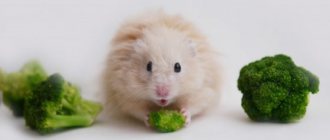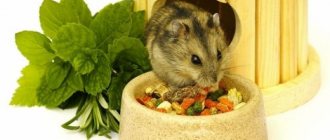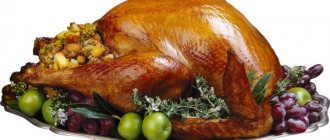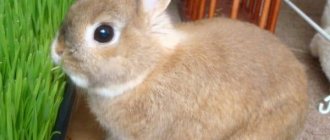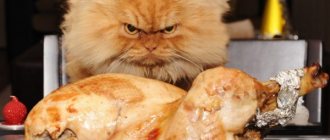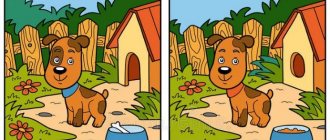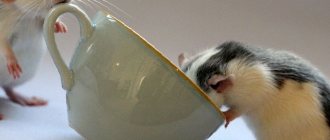Before deciding what to feed your hamster at home, you should contact animal breeders. If you purchased an animal at a pet store, ask the seller what kind of food was given to the baby. Considering that sellers are not able to provide optimal care for rodents, start from the animal’s usual food and supplement it.
What to feed hamsters
If you just bought a pet in a store, take all the contents at once, including a drinking bowl. From food you need to take grain food for hamsters and a mineral stone that does not contain salt.
The grain mixture should be specifically intended for hamsters, and not for birds or other rodents. Do not take drops for rodents: there is too much sugar, the animals do not need it. If the store offers several mixtures, do not take the cheap one. More expensive ones contain the vitamins and minerals your pet needs and are better balanced. If you still decide to take economy class food, buy vitamins for it.
In addition to the dry mixture, it is necessary to feed the animals with succulent food.
Fruits and berries
Fruits and fresh berries are very popular with domestic rodents. But is it possible to give them to rodents, because they are very sweet? In fact, rodents even need to be fed fruits and berries, but in reasonable quantities.
In this matter, the breed of the animal is of great importance. For example, Syrian hamsters can be periodically offered sweets, but dwarf hamsters need just a little bit of them: not as food, but as a reward. The fact is that representatives of the Dzungarian breed are susceptible to diabetes, which can be triggered by excessive consumption of dried fruits, fresh fruits and berries.
We invite you to figure out which fruits can be given to hamsters and which ones are not advisable to give. Firstly, you should not feed your animals citrus fruits and exotic fruits, because unusual food can cause an allergic reaction in a hamster, including anaphylactic shock. The pet may even die! Secondly, you should not give homea fruits with seeds: he can break his incisors on them, injure his cheek pouches with sharp edges, or even get poisoned by eating the core of the seed.
Here is a list of allowed fruits:
- Pears, apples. Rich in vitamins C and E, calcium, silicon, phosphorus, magnesium, iron. These substances support the animal’s immunity, strengthen teeth and bones. Pregnant hamsters are especially recommended to eat unsweetened apples. Pets can eat apples and pears both fresh and dried.
- Apricot and plum. The composition includes B vitamins, ascorbic acid, a large number of carotenoids, and microelements. It is better to treat your pet with slightly unripe apricots; you should not feed overripe fruits. Is it possible to give a hamster a peach, since it is a relative of the apricot? It’s better not to, because peach has much more sugar.
- Banana. Contains all possible vitamins except cobalamin, calciferol and biotin. The healthiest fruit should be presented as a treat. Since there is not much sugar in a banana, you can pamper your pet every day. It is allowed to treat your hamster with banana chips every day (in small quantities, of course).
- Watermelon and melon. The fruits are very sweet and juicy, so you should offer them to your pet no more than once a week.
Some berries will also be useful for rodents. Their list includes grapes (including dried), fresh raspberries, cherries, strawberries and blueberries.
Grapes are a very juicy berry; they contain biotin, alpha-tocopherol, B vitamins and many useful microelements (potassium, iodine, cobalt, silicon, etc.). These substances have a positive effect on the appearance of the coat, the health of the heart and blood vessels of rodents. Dried grapes (raisins) have a high content of iron, phosphorus, calcium and potassium - these elements must be present in the diet of pregnant females. However, you shouldn’t get carried away with grapes: Syrian hamsters can be given 3 raisins a week, while one will be enough for Djungarian hamsters.
Raspberries contain carotenoids, vitamins C, H, E and a wide range of microelements. Hamsters are given raspberries to prevent vitamin deficiencies and generally strengthen the immune system. But often you should not feed your hamster this berry, so as not to provoke diarrhea.
Cherries and sweet cherries. Juicy drupes contain a variety of vitamins and minerals, and the peel contains a lot of fiber. You can feed your fluffy with them after removing the bone.
Strawberries and blueberries are a rich source of ascorbic acid, which strengthens the immune system, helps resist viral infections and premature aging of the hamster.
What hamsters can and cannot do, food list
The table shows the main food groups of what rodents can and cannot eat:
List of food groups for a hamster's diet
| Must be given continuously as food |
| Dry food for hamsters, legumes except red beans, raw and cooked cereals except rice. Rice is given for diarrhea. Vegetables: root vegetables except potatoes, in season cucumbers and peppers, zucchini, pumpkin. Dill, parsley, lettuce, dandelion. Fruits are sweet, seasonal, seedless. Home dried fruits. Frozen vegetables without onions. Pumpkin, sunflower, melon seeds. Nuts other than almonds and apricot kernels should be given not as the main food, but as a supplement, since nuts are fatty. Sprouted oats, wheat. Branches of deciduous trees boiled for 20 minutes, but not from the street. |
| You need to give one of the positions to choose from 2-3 times a week |
| Boiled chicken breast without salt and other spices; low-fat lactic acid products (fat content no more than 1%); boiled egg white; very rarely meat or boiled shrimp; insects and gammarus purchased in the store; lean boiled fish without bones. |
| Can't give |
| Fried, smoked, salted, pickled, fatty. Sugar, salt, spices, honey. Cream, sour cream and butter. Pasta: both dry and boiled. Citrus fruits, persimmons, onions and garlic, radishes, potatoes, acorns, cabbage, eggplant, tomatoes. Coniferous branches. Insects from the street, bloodworms. Mushrooms, mint and rose hips. |
The table gives general principles on how to feed a hamster; based on them, create your pet’s diet.
List of prohibited products
What is strictly forbidden to feed a hamster:
- spicy, salty, smoked and canned foods;
- any spices;
- citrus and exotic fruits (lemons, oranges, tangerines, grapefruits, avocados, etc.);
- onion garlic;
- cabbage;
- potato;
- watermelon;
- mushrooms;
- sweets.
The list of prohibited herbs includes cereal leaves and dandelion. The sharp serrations on these leaves can injure your hamster's cheeks. Dandelion should not be given because of the milky juice.
What can you give hamsters, food quality
If you have no plans to get rid of the animal in the near future, pay attention to the quality of the food. An animal should not eat “from the trash heap”; moldy grains and rotten fruits are not suitable for children. Meals at home should consist only of fresh and high-quality food.
No one in their right mind would give their pet rotten fruit. But slightly spoiled apples with barrels are also dangerous for animals. A person is not afraid of porridge that has been sitting in the refrigerator for two days, but a hamster can get sick from it.
How to feed animals fruits
Fresh vegetables and fruits can be placed in a cage in large pieces or cut into pieces.
Since you can only feed your hamster fresh food, be sure to remove any leftover succulent food no later than after 8 hours.
Amount of food
How much a hamster eats per day depends on several factors:
- Age of the pet – youngsters eat more than adults.
- Pregnancy, feeding babies.
- Ambient temperature.
- Rodent activity.
According to statistics, a hamster eats a volume of food per day equal to 70% of its body weight. For example, a Syrian weighing about 150 g should be fed 100 g of food.
As a rule, owners do not make accurate calculations, guided by observations of the pet. Don't feed your Djungarian hamster too much. Overfeeding will lead to obesity and health problems.
It’s funny to look at a fluffy, plump dwarf, but the animal is very uncomfortable with excess weight. Obesity threatens serious diseases and shortens the life of a hamster. Keep an eye on your pet while eating; he may not eat the amount of food intended for him, but may hide some of it.
Is it possible to give hamsters the same food in winter and summer?
The diet of animals is quite varied. It includes: grains, nuts, fruits and vegetables, protein products. Vegetables and fruits have a seasonal cycle. In the middle zone, cucumbers and plums grow in summer. At this time they contain a lot of vitamins. There will be no benefit from plums for the New Year. It was either grown somewhere far away, or treated with chemicals that protect against spoilage. This product should not be given to an animal. As for watermelons, it is better to exclude them from the diet altogether. They contain a lot of water, and nitrates added during cultivation are perfectly soluble in it.
It is better to prepare fruits in season. To do this, dry apricots and pears, and then add them to your pet. Instead of greenhouse cucumbers, feed the animals carrots and turnips, which retain vitamins well; apples can be given as fruit.
What can you feed a hamster that is left without a mother?
It is a great misfortune if the babies lost their mother at birth or she escaped from the cage.
You'll have to arm yourself with patience and take care of the little hamsters yourself. Of the mixtures, milk is best suited for feeding kittens. You can buy it at a pet store. Give your babies the diluted formula every two hours. After eating, massage their tummy. Give the animals bottles of warm water to prevent them from catching a cold.
As they grow, their diet becomes richer. Add baby purees without salt and sugar to your animals:
- vegetable;
- fruit;
- meat.
Cook porridge with water for them. A month-old animal can be fed with adult food. If necessary, grind it on a grater.
Water container and daily dosage
A hamster needs easily accessible water. For this, a special drinking bowl or bowl is used. Any container is sold in pet stores and is presented in an assortment. The option with a bowl is not the best; the animal can easily pollute its water by throwing pieces of bedding in there or even turning it over. Then the floor in the cage will get wet, and the homa himself will not be able to drink.
Since the choice of special drinkers is large, it is more convenient to choose the option with a dispenser.
The daily dose depends on the breed and size of the hamster. And also on the microclimate in the apartment - how hot and dry it is in the house. It is generally accepted that these rodents require 10 milliliters of water per 100 grams of weight. This is 2 teaspoons.
Controversial issues or what not to feed a hamster
There are products that cause controversy among animal owners. Is it possible to give milk to animals, how much cheese can you give, and what harm can crackers and bread do?
To answer these questions, we will have to return to the diet of animals in the wild:
- Adult animals do not feed on milk, and the composition of cow's milk is not suitable for young animals. Babies fed bread soaked in milk survive only due to their potential health, and not due to proper feeding.
- You should not feed your pet hamster cheese. It is quite fatty and contains a lot of salt: this will harm the rodent.
- Bread and baked goods are completely inedible for rodents, although they will chew them. There are too many harmful components in the form of fat and sugar in crackers and cookies. If you decide to feed something similar, choose unsweetened dryers. It won't be too useful, but in minimal quantities it won't cause any harm.
Hamster rehydration
If your pet is slightly dehydrated because he ran out of his cage for a few hours, you need to take care of the problem by refilling the water bottle so that he drinks as much as he wants.
You should not try to bathe your pet thinking that this will quickly restore it. Hamsters do not swim in nature. Bathing will be stressful for the animal, and it may catch a cold.
When you suspect your pet is severely dehydrated or you don't know how long he's been without water, it's best to contact your veterinarian. Indeed, in some diseases, especially with diarrhea, it is not the disease itself that quickly kills, but possible dehydration.
The veterinarian will administer a saline solution with salt and mineral supplements intravenously or subcutaneously to help restore the condition.
What can you feed hamsters?
The closer a hamster's diet is to natural nutrition, the better for the animal. The less the product is processed, the more nutrients are preserved in it.
These rodents are children of the steppe. It's easy to guess what hamsters eat. The basis of their diet is grains of varying degrees of maturity: seeds, grass sprouts. Juicy roots and root vegetables obtained from vegetable stores are also on the menu of these resourceful animals.
Protein food is also necessary for animals. In the wild these are: insects, wounded birds and small animals.
So, the animals’ diet consists of:
- grain mixtures purchased at a pet store;
- juicy vegetables and fruits;
- greenery;
- seeds and nuts;
- low-fat lactic acid products, eggs or chicken breast 2-3 times a week.
The list of products can be supplemented if you have experience in raising such animals. You can make your own grain mixtures or supplement them with grass seeds or cereals.
The cage should contain water and a mineral stone for grinding down the incisors.
What should a hamster's food be?
Hamsters surprise us by the fact that they are ready to eat almost anything that comes their way. But this does not mean that any food will be harmless to their health and life. Many products can cause irreparable harm to them.
Such animals have a rather weak stomach. Therefore, they should not eat smoked, fried, sweet or fatty foods.
Scientists have proven (British, of course) that products such as cereals - buckwheat, oats and wheat - will be optimal for them. It is also important to ensure that the rodents’ food is only natural and fresh.
Another important question is what kind of cage does a hamster need? Of course, a cage with food and water. But how to combine it correctly? There is a separate article about this, but here we’ll talk about what to feed a hamster
Dry food
The diet of small domestic animals must necessarily include dry food, which becomes their main type of food. It is created using special technologies in accordance with the needs and preferences of pets. To produce such products, only carefully selected and prepared ingredients that are completely natural are used.
By the way, dry food is also produced for many other rodents and even birds. However, such products should not be used to feed hamsters, as they are not at all suitable for them.
Wet food
Despite the fact that these animals eat well dry food specially produced for them, which is inexpensive and available in any pet store, natural wet foods should not be excluded from their diet.
Vegetables such as zucchini, carrots, pumpkin, lettuce and some others are excellent for feeding such rodents. But all owners should remember that they should not feed their pets watermelons, potatoes and cabbage, which are very harmful to them.
It is worth including fruits in your pets' diet. Apples, currants and grapes will be optimal for them. Dried dried apricots and raisins are also suitable for animals. As a nice treat, you can occasionally pamper your funny pet rodent with bananas, apricots or pears. But do not forget that citrus fruits and exotic fruits such as kiwi, avocado and some others are not at all suitable for nutrition.
Proper nutrition of such animals is impossible without greens. Parsley, dandelion, lettuce and the like are ideal for this. But it is very important that such plants are not grown in a large city or near a highway. After all, exhaust gases are incredibly harmful to animals.
In addition, grass for them can be easily grown in an ordinary pot on the window. Hay is practically not suitable for feeding these decorative babies. After all, their paws often get entangled in the stems, which leads to the death of the limbs. The only exception here can be dry grass with short stems.
But nuts and seeds should not be used as the main food for hamsters. After all, all this is already in the special food. However, such food can still be used occasionally as a treat.
In addition, you should not follow the frequent advice of amateurs to feed these babies with peach or apricot pits and nuts in shell. Such nutrition will not lead to anything good and will cause poisoning or injury to the oral cavity of rodents.
Nutrition and care: dangers of improper feeding
It happens that inexperienced pet owners feed their animal seemingly correctly, but get poor results: the animal gains excess weight and digestive problems arise. What could be the reasons:
- the animal is given a lot of treats;
- The animal does not have enough “simulators” at home;
- hamsters' diet consists mainly of ready-made meals: cereals and boiled vegetables
It is unacceptable to feed hamsters this way, even if they like it.
In nature, animals run up to several kilometers a day. They need exercise. In addition to the wheel, for running the cage must have: paths, labyrinths, passages and ladders.
The hamster eats twice a day: morning and evening. The evening portion should be larger, since evening is the peak activity of these nocturnal animals. There is no need to impose restrictions on dry food so as not to create additional stress for the animal. Let the dry mixture remain in the feeder at all times. Change it so that it does not have time to deteriorate. But treats – dose them, especially if they are sweet, if you don’t want to fatten the animal and make it sick.
How much do pet hamsters eat?
Your pet is a nocturnal animal, you need to remember this. During the day he sleeps, and at night he eats, plays, exercises on a “simulator,” stores supplies, and sharpens his teeth. Therefore, the best option is to feed the baby twice a day. In the evening - the main meal, a hearty breakfast. In the morning, before bed, have a light dinner.
The amount of food that should be given to an animal at one time depends on the type and size of the rodent. When feeding twice a day, the Syrian is given one tablespoon of the feed mixture, and the Djungarian is given one teaspoon. Campbell's hamsters and other dwarf species feed similarly.
He will hide all the food that the hamster does not eat at one time in the pantry “for a rainy day.” Periodically review these supplies and remove perishable foods so that the animal does not get poisoned. Be sure to put something fresh in place of the “seized valuables”. Otherwise, the baby may become seriously stressed because all his reserves have disappeared, and he will die of hunger in the long, cold winter.
What do dwarf hamsters eat?
Feeding Djungarians is practically no different from feeding Syrian hamsters, with one exception. Children are susceptible to diabetes. For this reason, hamsters should not be given sweet fruits as their main diet. It is better to limit yourself to rare cases and give such fruits in small quantities.
Water
The life of a hamster, like almost any other living creature, is impossible without water. At the same time, many owners of such small decorative pets in vain think that they practically do not need to drink, since they do not have time to drink the entire water bottle in a day. But in reality they drink a lot. Therefore, it is worth changing the water in the drinking bowl every day.
You should also remember that the water container is a special bottle that hangs on the cage, but in no case should it be a bowl dangling under your feet. It is also important that rodents do not need to use distilled or boiled water for drinking. Tap, well, or filtered liquid, which is consumed by people themselves, is excellent for them.
